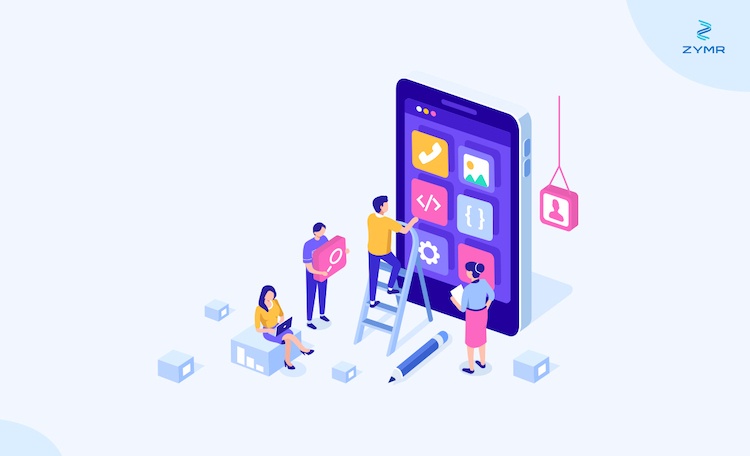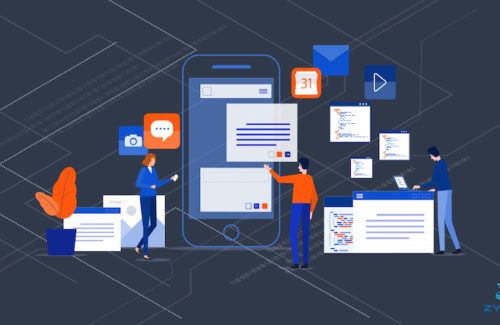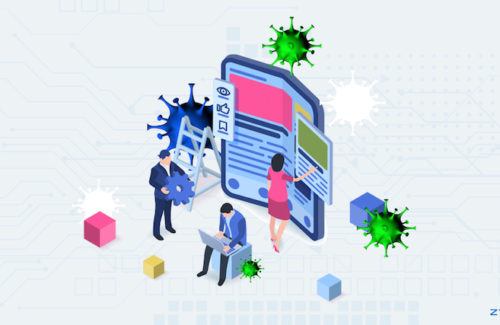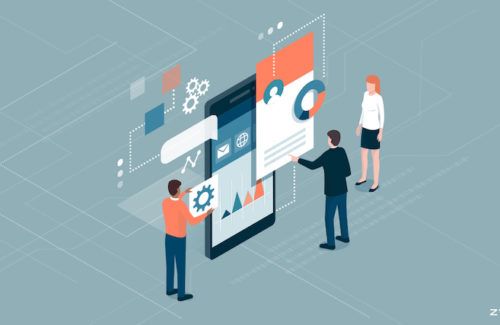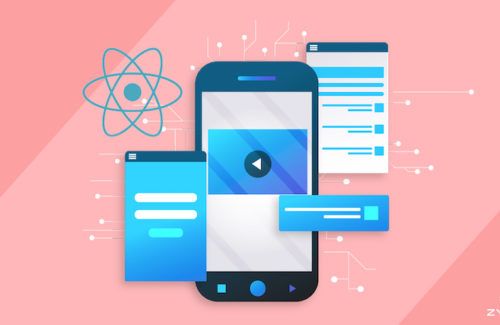Developing an outstanding mobile application is no piece of cake in the contemporary hyper-competitive markets. Millions of mediocre apps require intensive and extensive pre-planning from the start to create apps that stand out. Modern appreneurs strive to live up to the market expectations as competition has gotten intense, and clients have become demanding.
Mobile apps involve via series of well-researched phases, otherwise known as mobile app development life cycle. In the various phases of the life cycle, the mobile app’s journey begins with an out-of-the-box idea, followed by thorough research, feasibility analysis, prototype creation, design, testing, app launch with innumerable criticalities in between.
Corporates need to understand the mobile app development process in detail to get to know how that mobile app caters to the target audience’s pain point and how it can propel the business goals. This article will talk about the mobile app development lifecycle and the best practices along the way.
Market Research And Competitive Analysis
Everyone has ideas, but it takes a brilliant idea to lay the foundation for a successful app. And a solid plan is the outcome of thorough market research, a deep understanding of users’ pain points, and in-depth competitive analysis. The first and foremost step is to dive deep into research that helps in determining the mobile app goals, mobile marketing plans, and target audience.
Selecting the right framework and app development language can also make or break the mobile app. The initial analysis must incorporate the demographics, behavioral patterns, and buyer persona objectives to get a better understanding of how end-users use digital products.
Finalize the app development budget, timeline for development, and promotion tactics. Map out the USP and figure out the challenges faced by end-users in the mobile app’s planning phase to get a better understanding of which all features need to be included and for the app’s core appeal.
Wireframing, Storyboards, And Backend.
Appreneurs need to document and wireframe the app to make out the functionalities. Creating a comprehensive and complete sketch of the final product can track their step-by-step approach and highlight usability issues in the early stages after sketching comes wireframing, which fine-tunes the ideas and organizes the design components. Initial phases are crucial as enterprises can quickly root out the technical limitations from the backend development process.
Strategies need to be devised on how the suggested characteristics, features, or ideas can lead to a functional app’s development. A roadmap or a storyboard can showcase the screens to guide users in navigating through the app. The user experience of mobile apps and mobile websites also varies, which should be taken care of. Wireframes and storyboards provide a cushion to the back-end structures to support services related to APIs, data diagrams, data integration, servers and push notifications.
Organizations prefer to choose mobile backend as a service (BaaS) platforms to eliminate challenges related to scalability and unavailability of in-house human resources. Back-end systems should support the app’s functionality. Modification of wireframes/storyboards seems imperative during technical limitations in the backend development process, so flexibility is essential in the early stages.
CTV Growth Guide: A must-read for performance marketers
Whether you’re looking to boost brand awareness or drive user acquisition, this guide has you covered. Learn how to leverage CTV for both brand awareness and performance-driven campaigns and get actionable insights to optimize your strategies.
Download nowFeasibility Assessment And Prototype Creation
Feasibility assessment matters as an app’s performance depends on innumerable factors like smartphones, tablets, wearables, etc., as well as on the platform such as iOS, Android, etc. Assess and ascertain the technical feasibility by accessing the public data by sourcing public APIs. Technical feasibility incorporates analysis of technical resources that are related to project requirements.
Legal, Economic, Operational, and Scheduling feasibility also matter in the feasibility analysis. Such analysis sheds light on technical resources and examines the hardware, software, and other different technical requirements. Changes need to be made in the UI/UX to fix the weaklings found in the initial stage. Start developing an interactive and rapid prototype after the team has agreed over wireframe and storyboard. Prototyping is crucial as it provides an opportunity to examine design concepts, assimilate feedback, and identify broken links and errors in a mobile app’s flow and usability.
Even the personnel who are not involved in mobile app development should also examine the prototype to give a new perspective and honest feedback to the development team. It is advisable to use roughly as well as not exhaustive wireframes in this prototype phase. Different stakeholders can help app development teams to validate the information they have assimilated.
Designing And Development
Coming to the designing phase, UX designers create interactions among design elements, and the UI designers enhance the look and feel of the mobile app. Designing may involve various review stages depending on the scope of the app development project. The outcomes are blueprints and visual direction that guide app makers on how the interaction should move, feel, and flow.
Develop multiple variations of a screen through the help of layout of navigation, buttons, or different visual elements. If enterprises that don’t have app development platforms or mobile BaaS providers, their developers have to take care of storage solutions, APIs, databases, and backend servers. In outsourcing the app development, make sure there is a non-disclosure agreement with a fixed schedule for deliverables.
In a case of working with an in-house team, organizations use Agile methodologies to develop complex projects that cater to the needs of dynamic users’ demands. Agile work techniques aid the flexible planning techniques, progressive development, early deployment, and improve the scope of continuous improvements.
Testing And Official Release
Development should be followed by testing. Mobile apps must be tested thoroughly for usability, user acceptance, security, stress, compatibility, and performance. Enterprises should use online mobile UX testing tools to get real-time feedback and analytics and test for cross-platform compatibility of graphics and UX.
After the mobile app is launched, and it reaches the market, the feedback that enterprises get needs to be incorporated and infused into the app’s future version to live up to customers’ needs as every app needs to integrate frequent updates and new features to provide exquisite user experience to customers.
As appreneurs understand the end-to-end phases involved in the mobile app development lifecycle, they can develop an app with all the necessary features that the end-users are waiting for along with a competitive edge.
To Conclude
Leaders who put the entire app development team together to contemplate over the accumulated data during the discovery phases are definitely in an advantageous position with a sharp edge against their competitors. Informed decisions, out-of-the-box discussions, and constructive feedback in early stages can pave the way for a streamlined development process.
Future-gen businesses have to focus on analytics plans, tactics to deploy continuous updates, and monitor the KPIs to define a mobile app’s success ultimately. From research to deployment, the App development process involves the up-front design, rigorous QA testing, usability testing, a full beta lifecycle, etc.
A thorough understanding of these key phases of the mobile app development lifecycle seems imperative for entrepreneurs and appreneurs to thrive in the modern world. In fact, they will be better positioned to kick-start their journey through a feature-loaded app that can take their businesses to the next level and reach new heights.
Zymr is a leading mobile app development that assists other companies in developing feature-loaded and exquisitely designed apps. Our mobile application development services help companies deliver security without impacting usability, and provide users a more intuitive experience across devices, fully leveraging the game-changing potential of mobility. We hold profound experience in delivering Android app development, iOS app development, Hybrid app development, and React Native development services. Schedule an appointment with our team today.



